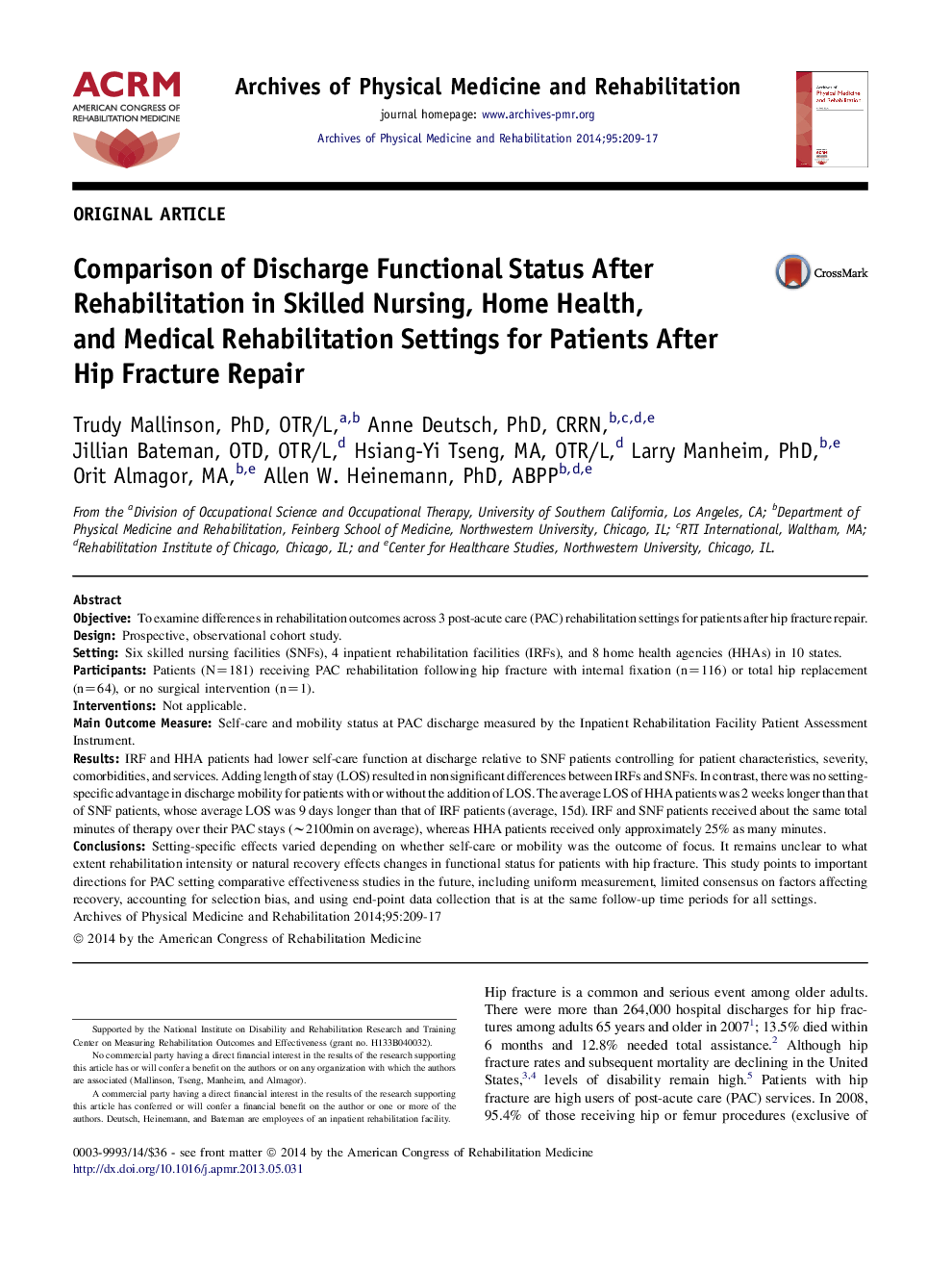| Article ID | Journal | Published Year | Pages | File Type |
|---|---|---|---|---|
| 3449029 | Archives of Physical Medicine and Rehabilitation | 2014 | 9 Pages |
ObjectiveTo examine differences in rehabilitation outcomes across 3 post-acute care (PAC) rehabilitation settings for patients after hip fracture repair.DesignProspective, observational cohort study.SettingSix skilled nursing facilities (SNFs), 4 inpatient rehabilitation facilities (IRFs), and 8 home health agencies (HHAs) in 10 states.ParticipantsPatients (N=181) receiving PAC rehabilitation following hip fracture with internal fixation (n=116) or total hip replacement (n=64), or no surgical intervention (n=1).InterventionsNot applicable.Main Outcome MeasureSelf-care and mobility status at PAC discharge measured by the Inpatient Rehabilitation Facility Patient Assessment Instrument.ResultsIRF and HHA patients had lower self-care function at discharge relative to SNF patients controlling for patient characteristics, severity, comorbidities, and services. Adding length of stay (LOS) resulted in nonsignificant differences between IRFs and SNFs. In contrast, there was no setting-specific advantage in discharge mobility for patients with or without the addition of LOS. The average LOS of HHA patients was 2 weeks longer than that of SNF patients, whose average LOS was 9 days longer than that of IRF patients (average, 15d). IRF and SNF patients received about the same total minutes of therapy over their PAC stays (∼2100min on average), whereas HHA patients received only approximately 25% as many minutes.ConclusionsSetting-specific effects varied depending on whether self-care or mobility was the outcome of focus. It remains unclear to what extent rehabilitation intensity or natural recovery effects changes in functional status for patients with hip fracture. This study points to important directions for PAC setting comparative effectiveness studies in the future, including uniform measurement, limited consensus on factors affecting recovery, accounting for selection bias, and using end-point data collection that is at the same follow-up time periods for all settings.
